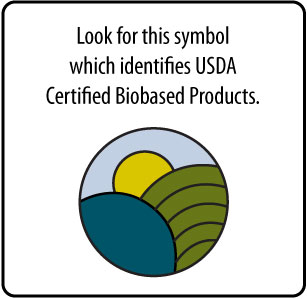Base stocks
Unlocking the potential of re-refined base oils
08 April 2025
11 March 2015
High quality bio base oils find new growth markets

In a rather long high quality base oil market, the nature of some unconventional base stocks means they are finding a place in certain markets. Insight talks to bio-based producers about these exciting growth opportunities.
Previous base stock features in our series have looked at the changing Group I and II landscape, trends in the PAO and GTL markets and at the differentiation in Group III products. In this feature we start to look at so-called ‘unconventional’ base stocks, by talking to Novvi and Biosynthetic Technologies about the challenges facing bio-based producers.
But, before we go any further, it is important to establish just what the ‘bio’ prefix means in the context of base stocks. Is it a base stock manufactured from bio-based materials, like plant oils? Or is it base stock that is considered to be biodegradable, for example some organic esters? Or are both of these characterisations correct?
The terms bio-based and biodegradable do not mean the same thing, they are not interchangeable and certainly not all materials from renewable feedstocks are biodegradable.
In the US for example, appropriate ASTM tests need to be used to determine the percentage of a product that has been derived from bio-based sources and to assess if it is biodegradable. In this feature we will focus on bio base stocks that are produced from bio-related materials, and which may have three key criteria: toxicity, renewability and biodegradability. Our next feature will explore the growing interest in high quality synthetic base stocks.

Bio base stocks are derived from a variety of renewable agricultural, marine & forestry materials
Bio base stocks are derived from plants and other renewable agricultural, marine, and forestry materials, for example the vegetable oils found in soya beans, sugarcane and palm oil fruits.
Until now, growth in the use of vegetable oils has been severely limited by their poor performance, especially in the oxidation area driven by the presence of residual double bonds. Consequently, the market has been small and confined to relatively few market sectors.
“I would estimate that the global market for bio base lubricants is less than 500KT”, says Jeffrey Brown, President and CEO of Novvi. “This is driven by the industrial market and regulatory requirements around renewability, biodegradability, and toxicity.”
Advances in technology mean bio base stocks can now deliver performance characteristics comparable to Group III and IV base oils, and some have the added benefit of being biodegradable.
California-based Biosynthetic Technologies produces high-performance biosynthetic ester base stocks from organic fatty acids found in plant oils. These products, available in a wide range of viscosities, are renewable, biodegradable, non-toxic and do not bio-accumulate. “We are finding there is strong demand for a more competitively priced bio-derived synthetic that meets high performance standards, particularly from North America, Europe and there is also surprisingly strong interest in China and Japan,” explains Allen Barbieri, Chairman and Chief Executive Officer at Biosynthetic Technologies.
Also headquartered in California, Novvi produces base stocks from Biofene a renewable hydrocarbon molecule made from sugarcane syrup. The products are fully saturated, branched-chain alkanes with low volatility that, due to their branched structure, also have a good mix of cold flow properties, biodegradability and oxidative and thermal stability, and have properties similar to PAOs, and high end Group IIIs.
“Right now there is essentially zero market for bio-based products in automotive engine oils, due to the performance limitations we have had with environmentally friendly base oils in the past.”
Jeffrey Brown, President and CEO of Novvi
“But we now have renewable base oils that can drop in and match the performance of a Group III or IV and differentiate on renewability, biodegradability, and often toxicity, which is very high value in the right applications with the right customers," confirms Jeffrey Brown.
The market for high quality base stocks is currently long, with new supply being added in many countries. This puts pressure on the bio-producers and forces them to find niche markets in which their products can add significant value. As Allen Barbieri explains, “Given the pricing pressure from the current excess supply of Group II and III, bio base stocks will not be price competitive initially with these base oils."
"For most applications, lubricant marketers interested in using bio-based stocks will need to show strong performance benefits beyond just a green story.”
Allen Barbieri, Chairman and Chief Executive Officer at Biosynthetic Technologies
As regulators target oils that are used on or near water and forests, and industrial fluids that can come into contact with workers, opportunities for bio base stocks in these applications are expected to grow significantly. “For the products in this sector, where biodegradability and toxicity are very important, current and expected additional future regulations may drive demand,” explains Allen Barbieri.
 The Vessel General Permit requires all vessels longer
The Vessel General Permit requires all vessels longer One example of the new ‘environmental’ mandates helping the bio base stocks market to gain ground is the US EPA’s Vessel General Permit (VGP) requirements, which came into effect in December 2013. The permit requires all vessels longer than 79 feet (24m) operating anywhere within three miles of the US coast to use ‘Environmentally Acceptable Lubricants’ (EALs) in all oil-to-sea interfaces.
The majority of ocean going ships operate with oil-lubricated stern tubes and use lubricating oils in a large number of applications on-deck and underwater, which can come into contact with the water. The EPA believes that using vegetable oils and biodegradable base stocks as oil bases instead of mineral oils in these applications will help to reduce the environmental impact of lubricant discharges on the aquatic ecosystem. Allen Barbieri is pleased to see the introduction of such mandates. “The introduction of initiatives like the Vessel General Permit and the BioPreferred Program, combined with growing involvement from environmental groups, particularly those focused on water pollution, will drive growth of bio-based Environmentally Acceptable Lubricants.”
In Europe, the European Commission has identified bio-based products as a lead market. This means that under its Lead Market Initiative the EC will try to lower barriers to bringing these new products onto the market by introducing regulations, public procurements, standardisation and other supporting activities.
Standards for bio-based products could be a way of providing common reference methods and requirements to verify claims about them in terms of bio-degradability, bio-based content, recyclability and sustainability.
Standards have been identified as essential elements in generating demand of existing and new bio-based products – and with a distinct lack in Europe, CEN has been tasked with developing them in a number of areas.
“These regulations are significant drivers for growth,” says Jeffrey Brown. “But in the past we have been constrained by a lack of cost effective solutions that can perform to market expectations. The regulations were necessary to obtain the investment needed, from base oil, additives, and formulations standpoint, in new technology to provide the right solutions to the market that might otherwise not be allocated. We now have products that meet the performance requirements at the right price and normal market forces will take over.”

BioPreferred programme aims to increase thepurchase and use of bio-based products
Helping users to identify bio-based products is also an essential part in driving growth. The BioPreferred programme, which is managed by the US Department of Agriculture, aims to increase the purchase and use of bio-based products.
Through the Voluntary Labelling Initiative, companies may apply for certification to display the USDA Certified Bio-based Product label on a product. The label shows the percentage certified bio content of both the product and the packaging and is designed to make it easy for consumers to locate and compare bio-based products for purchase.
The Ecolabel has been introduced to help European users identify products and services that have a reduced environmental impact throughout their life cycle, from the extraction of raw material through to production, use and disposal. Even though the scheme is voluntary, hundreds of companies across Europe have joined up to demonstrate their products meet the criteria.
While the drivers of regulation, standardisation and increased consumer awareness are all good signs for the bio-based industry, there are still barriers to the wider introduction of bio base stocks. Both of the producers we spoke to told us that currently the high investment required to manufacture sufficient volumes at competitive prices is a real hindrance.
“Production costs for any small volume chemical are always high,” says Allen Barbieri, “and the largest near term barrier to seeing bio-based oils more widely used is the adequate construction of large-scale production capacity to achieve economies of scale and to meet current demand.” Jeffrey Brown agrees, “It is very important to scale up the technology to drive the costs of the base oil down. We are competing in a market with products that are made in the large petroleum refining world. Early market success will allow this expansion to occur and ensure the continued growth in the market.”
Despite the costs, both companies are planning large-scale capacity increases in the next few years, which clearly confirm their high expectations of the market.
Jeffrey Brown looks out to the future. “Environmental pressure is only going to continue to increase as global population and energy demands grow. In 10 years new bio base oil technology will enable a significant shift in the market and they will be a major player.”
Allen Barbieri supports this feeling. “In 10 to 15 years, even without further regulation, with a lower cost of manufacturing and significant performance benefits, the market share of bio base oils could be greater than either PAOs and PAGs."
"The excitement we are seeing in bio-based oils comes mostly from their price and performance, while sustainability is secondary. However, with additional regulations, the market for these oils could grow”.
Allen Barbieri, Chairman and Chief Executive Officer at Biosynthetic Technologies

Bio products are unlikely to be more than a nicheapplication in the transportation sector forthe foreseeable future
Although activity and confidence in this market sector is increasing, Infineum does not expect these bio products to be more than a niche application in the transportation sector for the foreseeable future.
However rising OEM and consumer demands for sustainability could increase their use – certainly that is the view of Allen Barbieri. “As more viable bio base oils that are proven to work in passenger and heavy-duty applications are developed it is likely that legislators will focus on regulating and mitigating pollution caused by lubricants – which would significantly drive their use in this sector."
Jeffery Brown has similar confidence, “In the automotive sector the use of bio oils is being driven by OEM’s push towards sustainability and fuel economy along with a growing percentage of consumers who desire and purchase green products." And the two producers see only limited barriers to growth.
"We see the largest growth opportunity for bio base stocks in markets that directly touch the green consumer - like automotive engine oil."
Jeffrey Brown, President and CEO of Novvi
As Jeffery Brown continues, “With a bio-based Group III+ base oil there are only marketing barriers - there are no technical or operational limitations. It is critical to get the market to realise the value of the environmental characteristics.”
“In my view,” says Allen Barbieri, “with bio-based products now achieving ILSAC GF-5 certification, the use of these oils in mainstream passenger car or heavy-duty motor oils is just beginning. While growth in demand for bio-based oils could be rapid, actual growth will be limited by production capacity.”
Of course one concern raised by the entry of these bio base stocks into the mainstream passenger car and heavy-duty markets is added complexity. Developing base oil interchange and viscosity grade read across guidelines is already very challenging in a resource constrained industry and adding even more products into the mix could further complicate the task. Minimum manufacturing capacities will also be critical to encourage the industry to invest, and to ensure a good return for any volume of bio lubricant used in finished formulations.
Both Novvi and Biosynthetic Technologies noted that their products have been qualified for ILSAC GF-5 and have licensable API SN/resource conserving options. Investment to meet complex OEM requirements in passenger car and heavy-duty applications also poses a significant challenge to entry. However current small engine, marine and motorcycle applications are quite feasible today.
Sign up to receive monthly updates via email